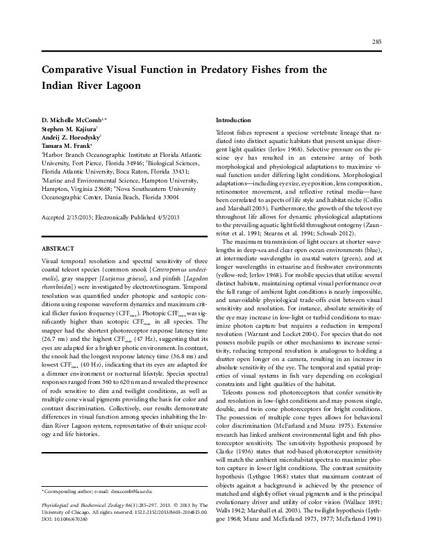
Visual temporal resolution and spectral sensitivity of three coastal teleost species (common snook [Centropomus undecimalis], gray snapper [Lutjanus griseus], and pinfish [Lagodon rhomboides]) were investigated by electroretinogram. Temporal resolution was quantified under photopic and scotopic conditions using response waveform dynamics and maximum critical flicker fusion frequency (CFFmax). Photopic CFFmax was significantly higher than scotopic CFFmax in all species. The snapper had the shortest photoreceptor response latency time (26.7 ms) and the highest CFFmax (47 Hz), suggesting that its eyes are adapted for a brighter photic environment. In contrast, the snook had the longest response latency time (36.8 ms) and lowest CFFmax (40 Hz), indicating that its eyes are adapted for a dimmer environment or nocturnal lifestyle. Species spectral responses ranged from 360 to 620 nm and revealed the presence of rods sensitive to dim and twilight conditions, as well as multiple cone visual pigments providing the basis for color and contrast discrimination. Collectively, our results demonstrate differences in visual function among species inhabiting the Indian River Lagoon system, representative of their unique ecology and life histories.
Available at: http://works.bepress.com/tamara-frank/17/

©2013 by The University of Chicago